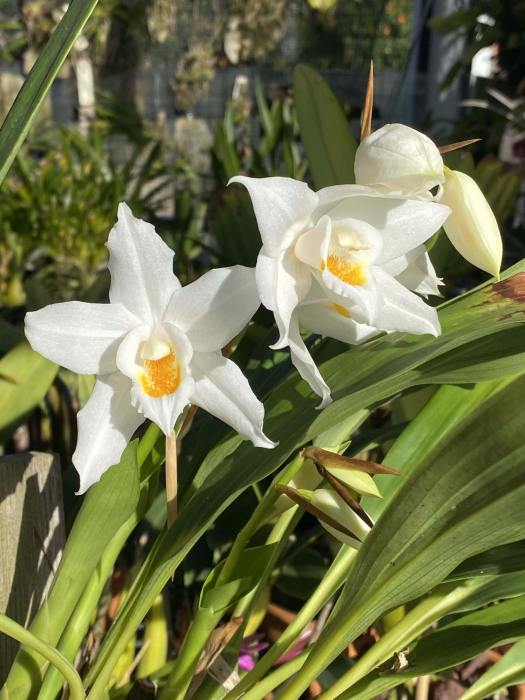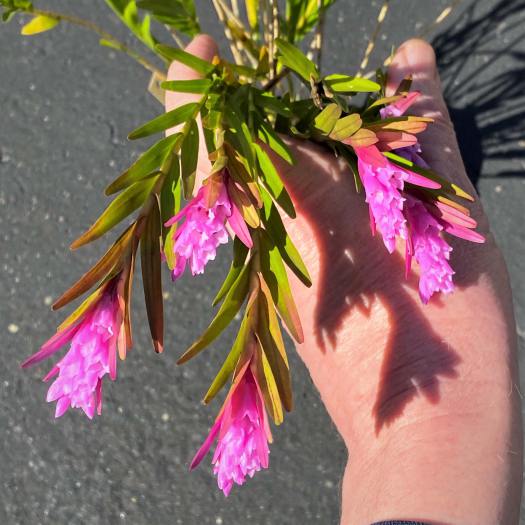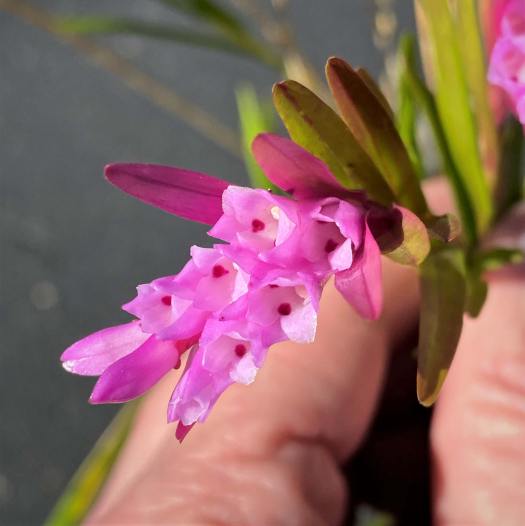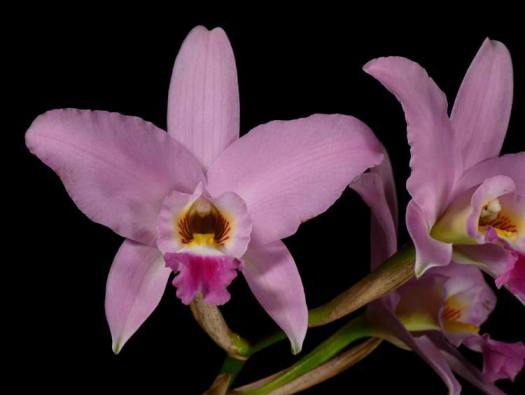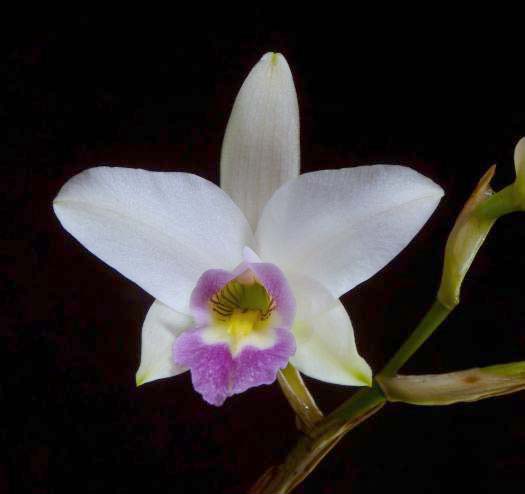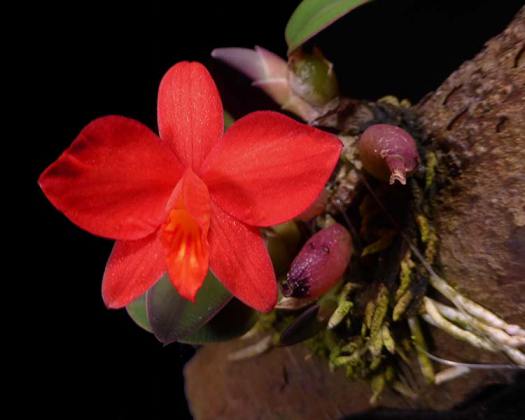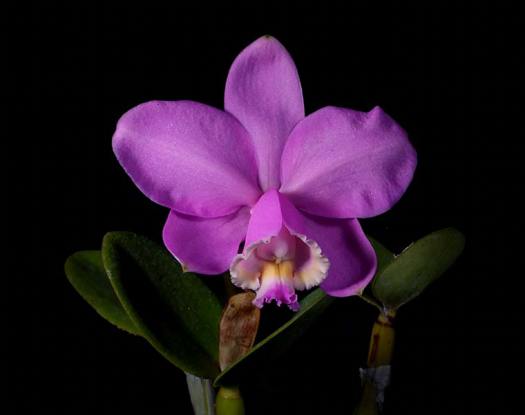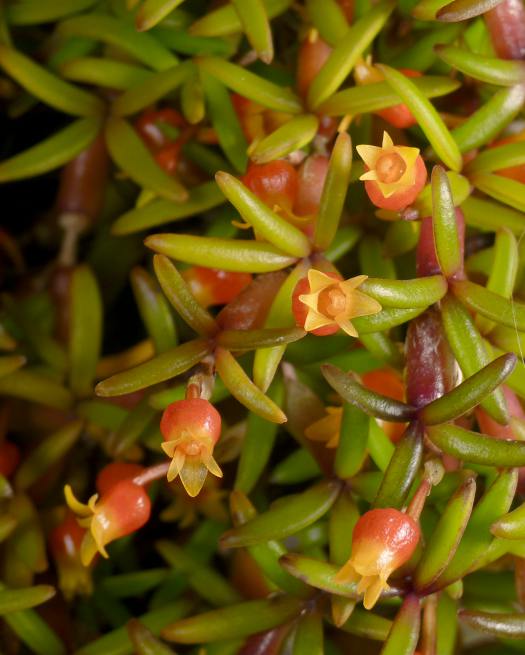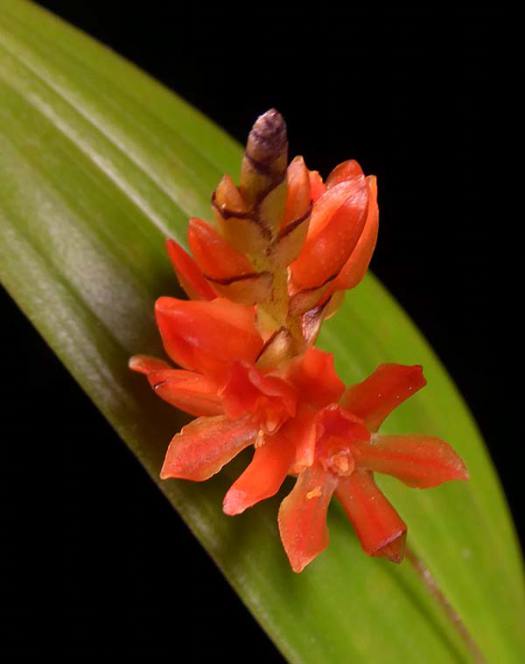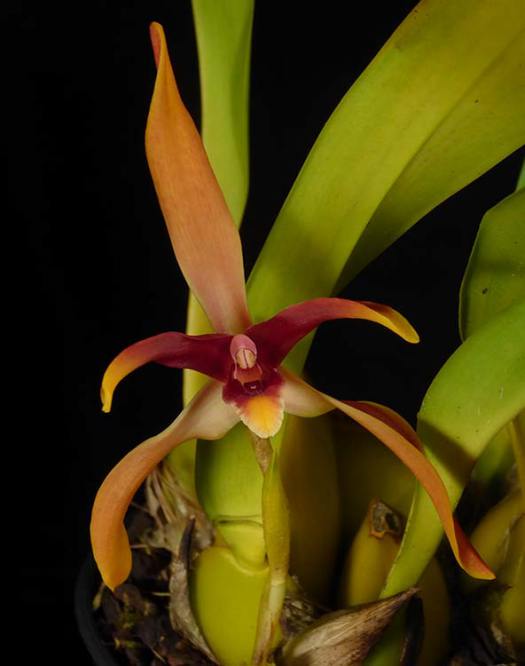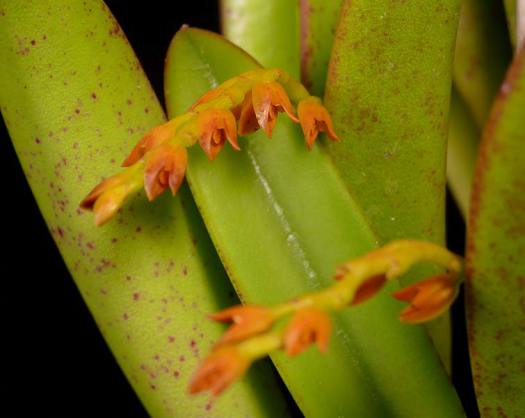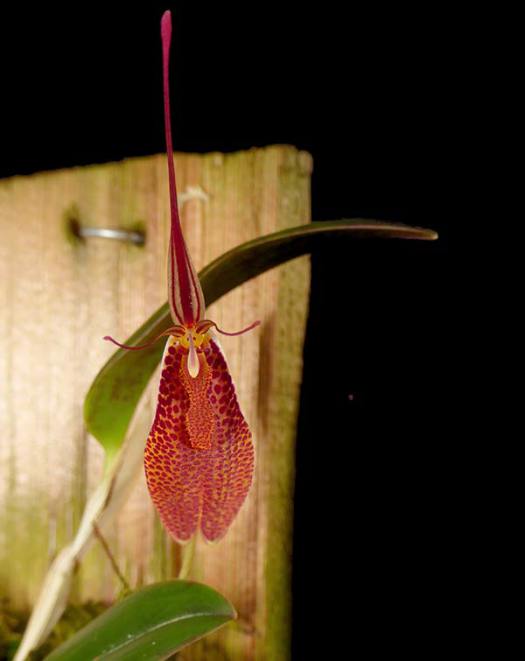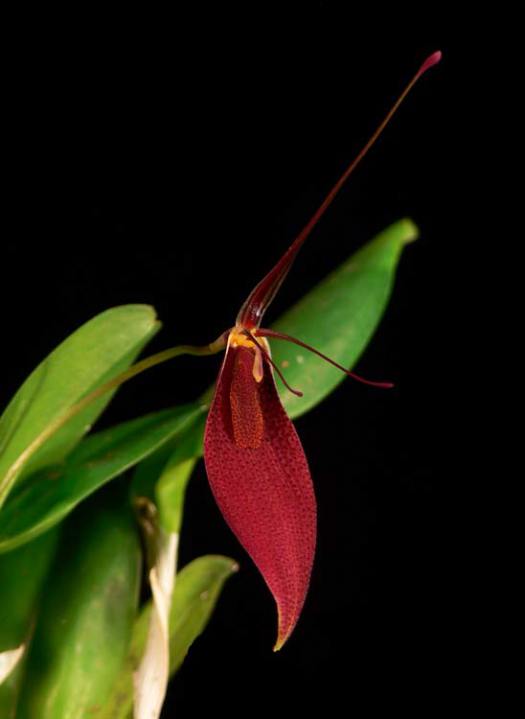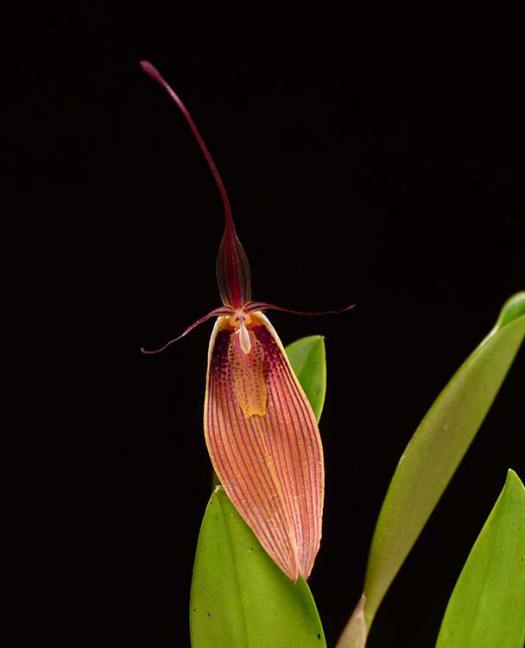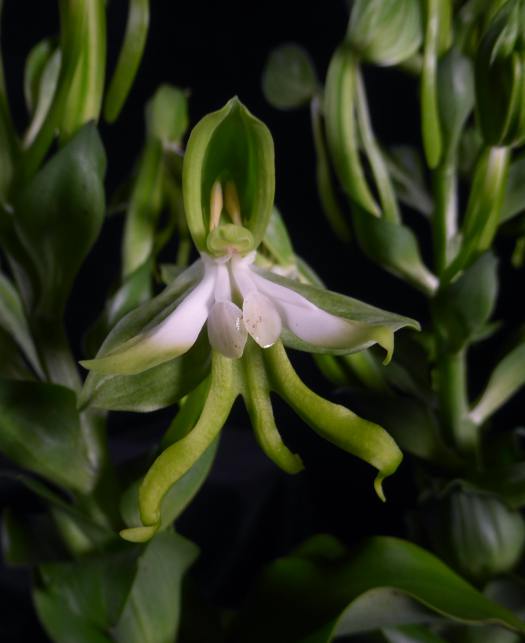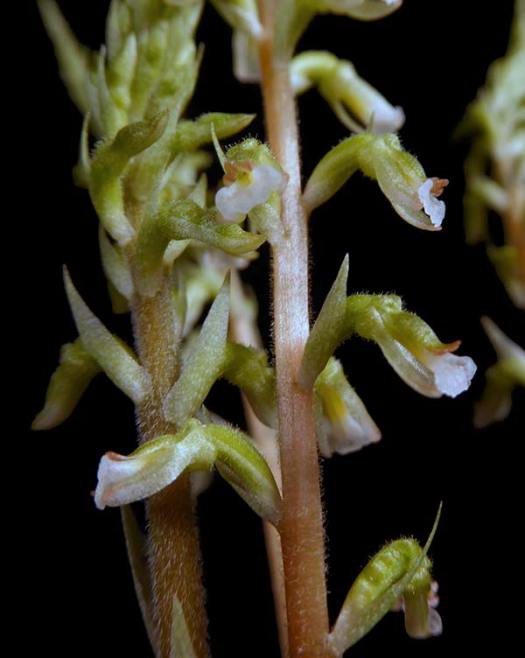February 2020 |
Show and Tell
From Scott McGregor:
|
|
Laelia anceps var. veitchianaOne of the many L. anceps varieties. Nice for variety and I got 4 spikes this year! |
|
Isochilus major 'Santa Barbara'The many graceful canes of this species bloom occasionally, sometimes multiple times per year with bracts of tiny, brightly colored terminal leaves and flowers. Beware of cutting old canes that seem dead as they are often still green inside. |
|
Laelia autumnalisAnother winter-flowering Laelia to brighten your growing area. This one really seems to like bright light and nearly full sun—didn’t bloom for many years in a row until I moved it to the brightest part of my growing area. It seems happy now!
|
Leptotes pauloensis (harryphillipsii)Andy Phillips named a supposedly new species after his brother, Harry, but turned out to actually be L. pauloensis. Very cute mini nonetheless, and easy to grow outside. Keeping the old tag for fun… |
Maxillaria sophronitisPretty orange-red flowers with a yellow throat on this aptly-named species for those who have trouble growing Sophronitis! It likes bright but cool and moist conditions, and flowers sporadically over the year and flush blooms in January for me. |
|
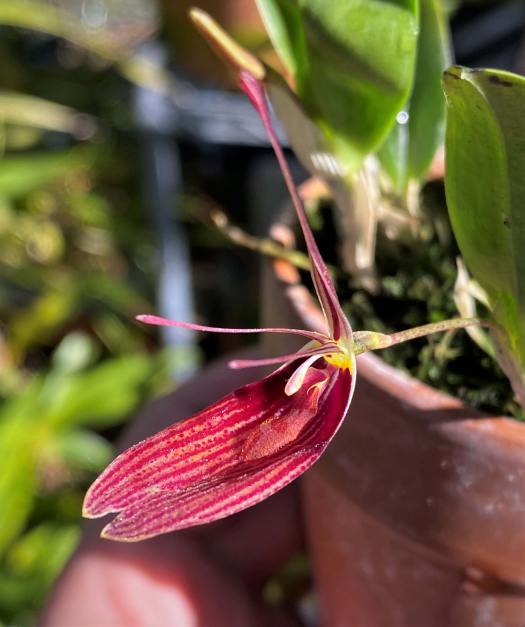
Restrepia sanguineaCold and wet—that’s perfect weather for Restrepias. These plants from the high Andes have unusual bug-like flowers, are brightly colored, and vary considerably even within a species. Restrepia sanguinea is named for its blood-red coloration, and my shy-blooming striped variety (above) finally decided to put on a show. Also shown (left and below) are two other variations of R. sanguinea—typically spotted instead of striped. They prefer cool, shady and constantly moist conditions, with good (R/O) water, but if you can keep them moist during our hot summers they’ll thrive outside in our winter. |
|
Pteroceras semiteretifoliumI have two plants of this cute and easy-to-grow mini—one has flowered reliably every September for the last five years, and the other every January. Go figure… |
|
From Roberta Fox:
|
|
Outside in the Back Yard: |
|
Laelia ancepsStill more blooming, and a few not yet open. The season wil run well into February this year. A few varieties... |
|
Laelia anceps var. veitchiana 'Fort Caroline'One of the older cultivars, this is a paticularly vigorous and nicely-colored coerulea semi-alba form. |
|
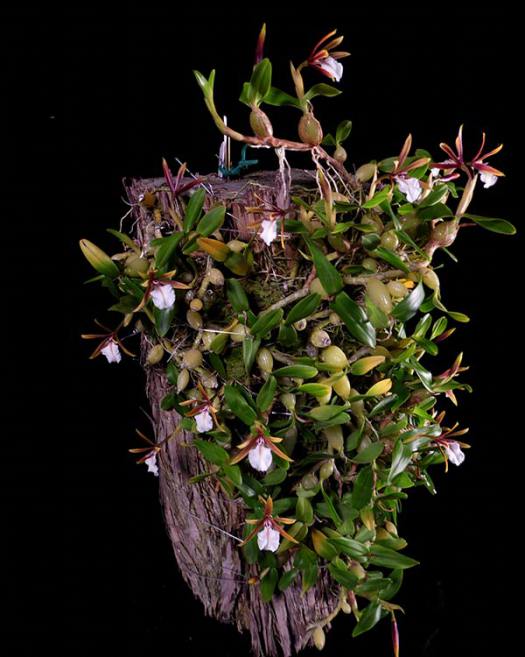 |
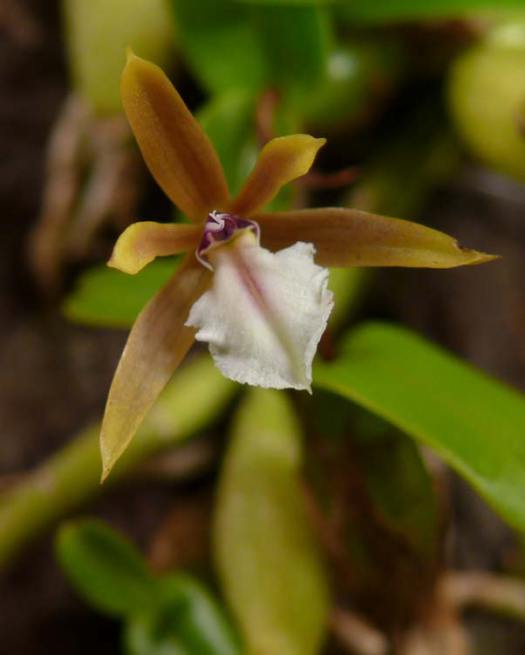
Dinema polybulbonThis was reclassified as Encyclia for awhile, but appears to be back to Dinema. It forms a mat, and appears to really like this mount that I put it on last spring after its prior mount disintegrated. |
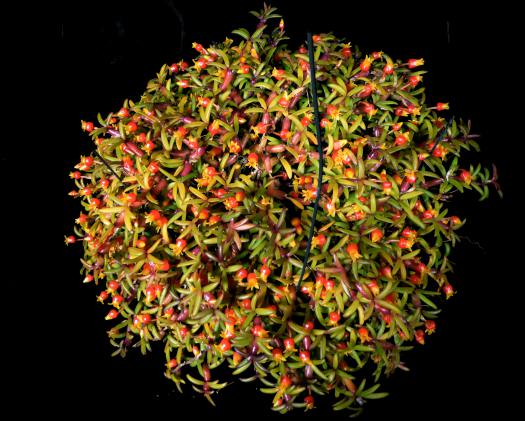
Mediocalcar decoratumThese flowers remind me of candy corn, but someone on a forum described them as "exploding bowling balls" which I also like! It grows over the top of a basket containing sphagnum (which provides moisture even though most of the roots are over rather than in it) It was doing nicely in shade, but last year I followed Scott's suggestion and moved it to more light. I was rewarded with LOTS more flowers so there it will stay. It should start draping over the side if the basket - my goal is a ball. |
|
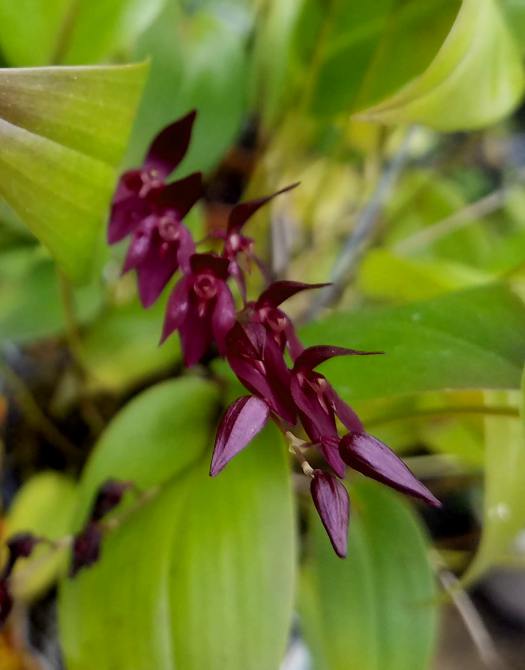 |
.jpg)
Pleurothallis rowleeiIndividual flowers aren't spectacular, but it produces chains of them on many leaves. |
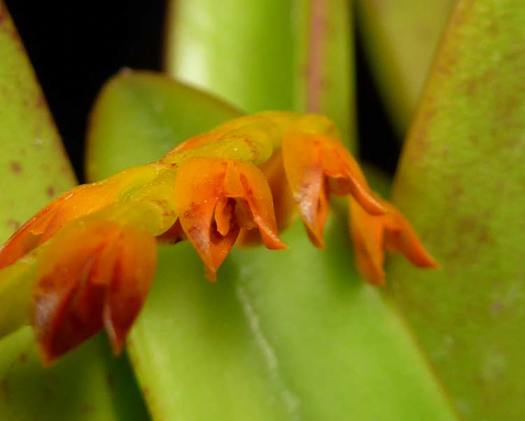 |
|
Acianthera (Pleurothallis) ochreataThis species grows like the rupiculous Laelias, in gravel with just a bit of organic matter. Leaves are very succulent, and point upwards, an adaptation to growing in full sun. |
|
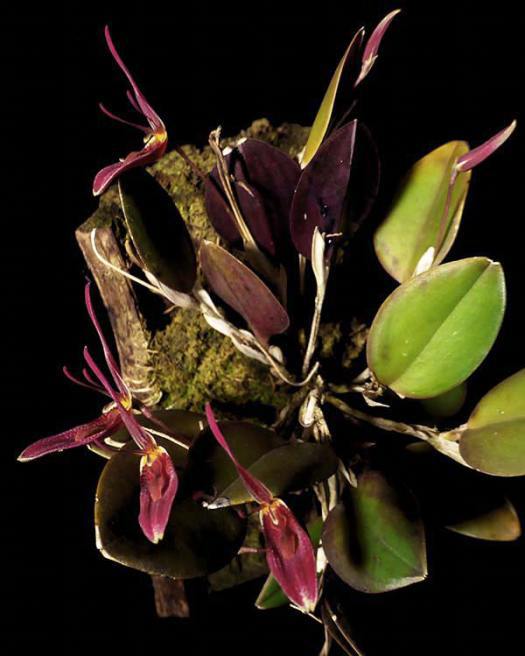
Restrepia condorensisThis plant is hardly ever out of bloom, and often produces flushes of flowers. |
|
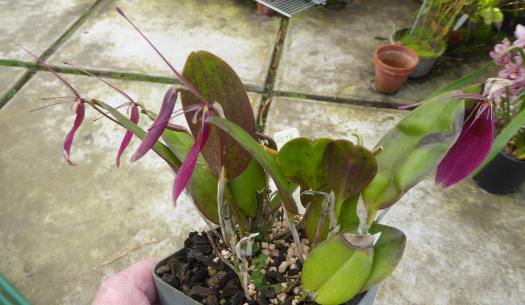 Restrepia sanguineaAnother variation of this species - spotted, but spots so dense that the impression is a solid color. Above is a photo of the multiple flowers open so far, there are more that are getting close. This one reliably blooms for me in January or early February. |
|
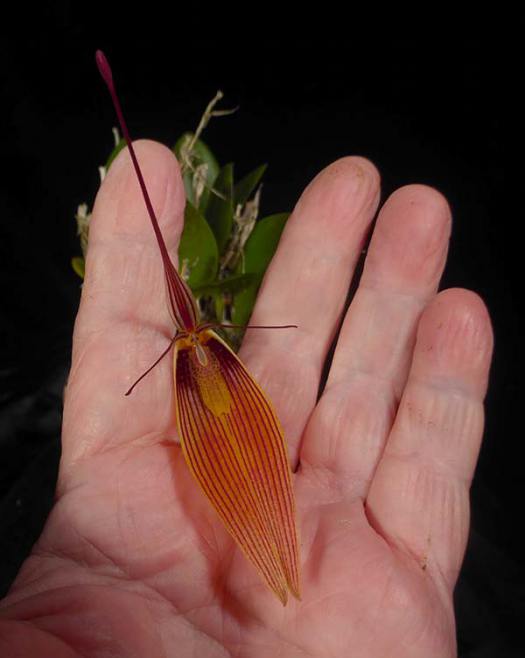 |
|
Restrepia antennifera 'Cow Hollow'Huge flower for the genus. |
|
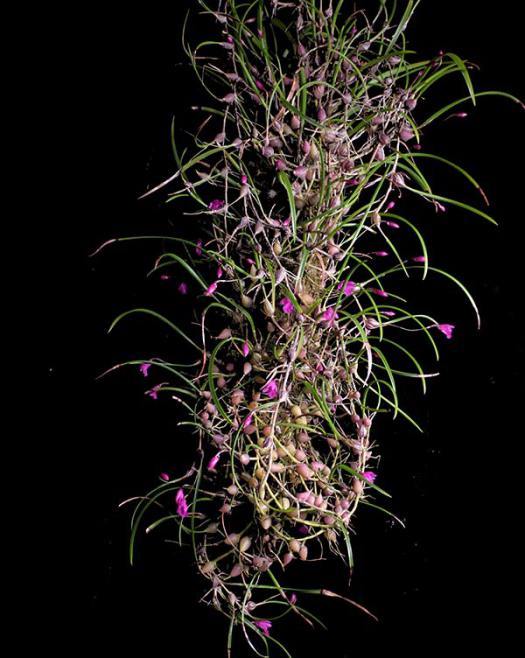 |
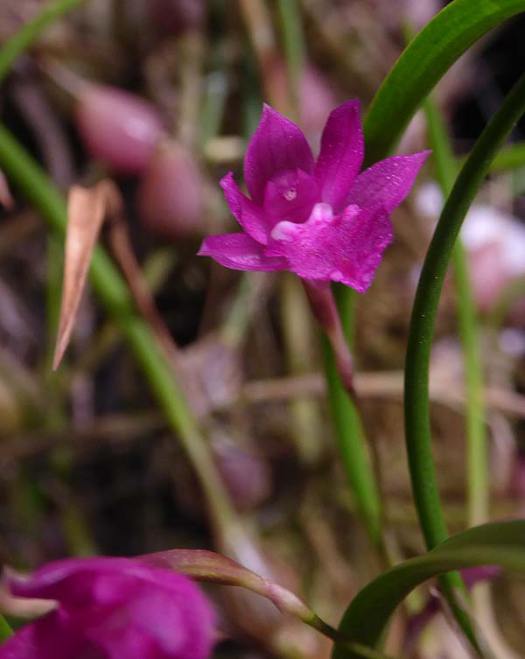
Isabelia pulchellaI got this one from Scott about a year ago. It's growing nicely, but will take a little while to get as big as the one that he shared last month. Thanks, Scott! |
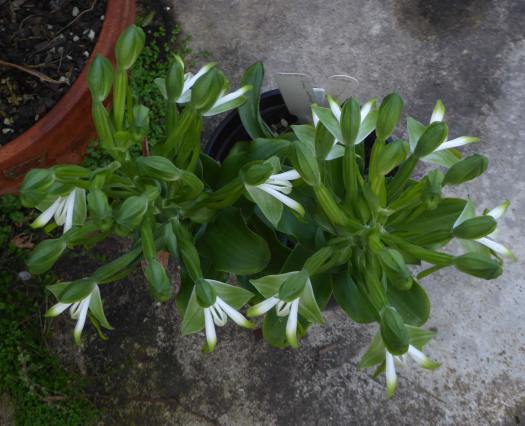
Bonatea speciosaIf the flowers that are open stay that way while the rest of the buds open, it'll be even better for next month. Or, it may open more sequentially, dropping the old flowers while opening the new. We'll see... This African terrestrial with weird flowers dies back after flowering, then produces new growth usually twice during the year, only blooming for me on the winter growth. |
|
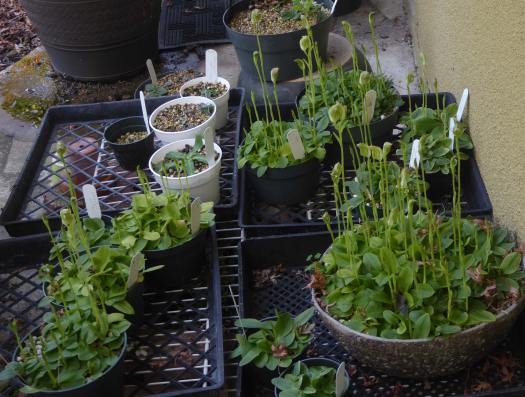
Pterostylis curtaThis is my Pterostylis curta "farm" ... only a few flowers open in various pots, but lots of spikes. Next month will be really good. |
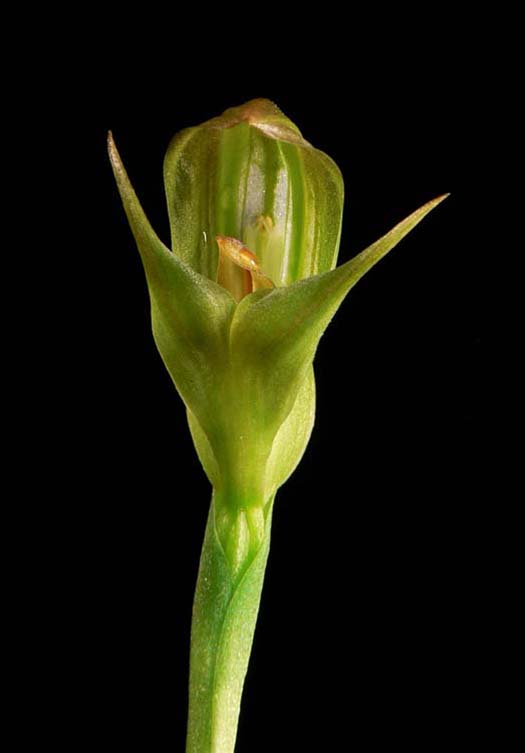 |
In the greenhouse... |
|
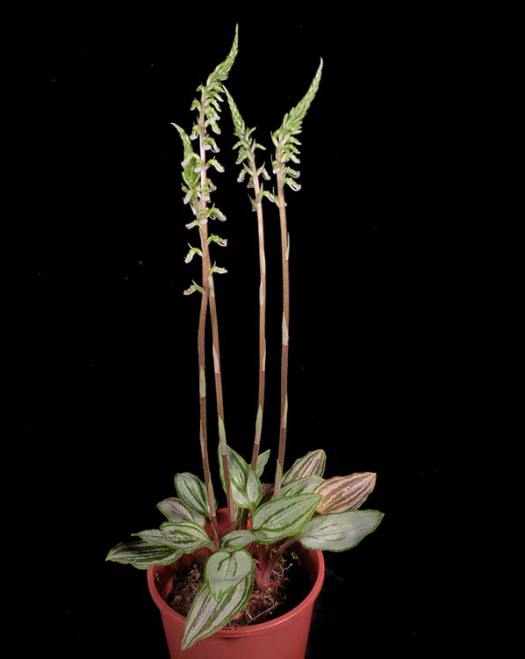 |
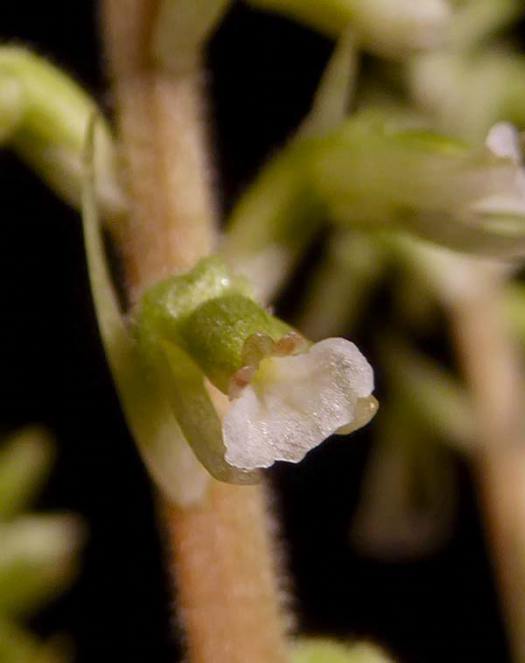 |
Cyclopogon lindleyanusA terrestrial with attractive leaves and interesting flowers. It has almost doubled in the last year, but still is a relatively compact plant. |
|
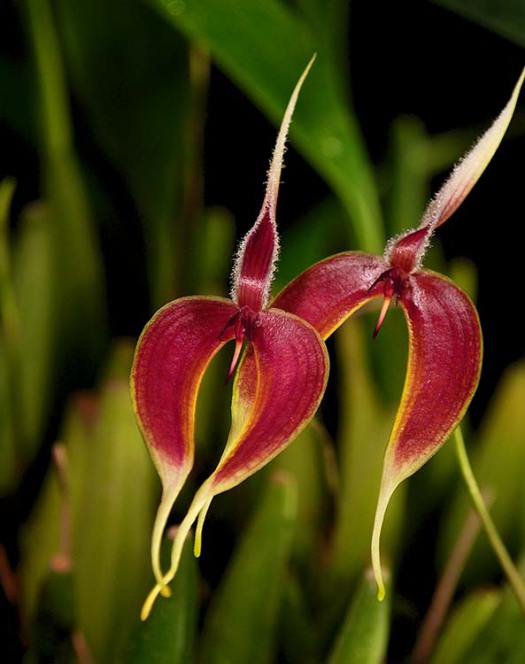 |
|
Bulbophylum blumei (maxillare, masdevalliaceum)Bulb maxillare is the currently-accepted name, but all three names are quite common (Buy one, buy them all...) . It is quite vigorous.
|
|
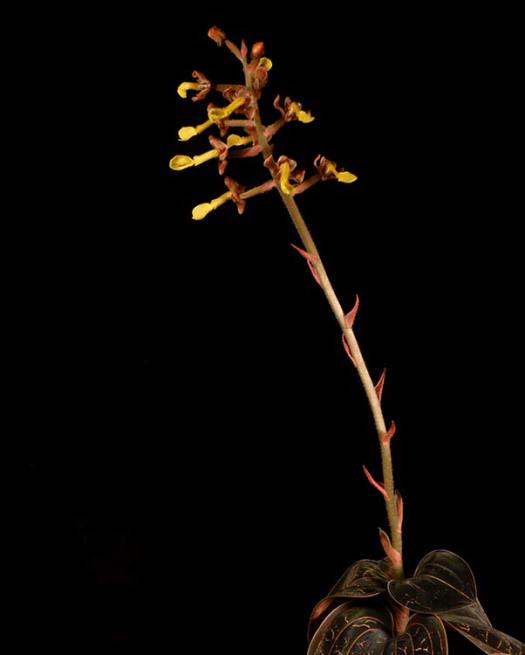 |
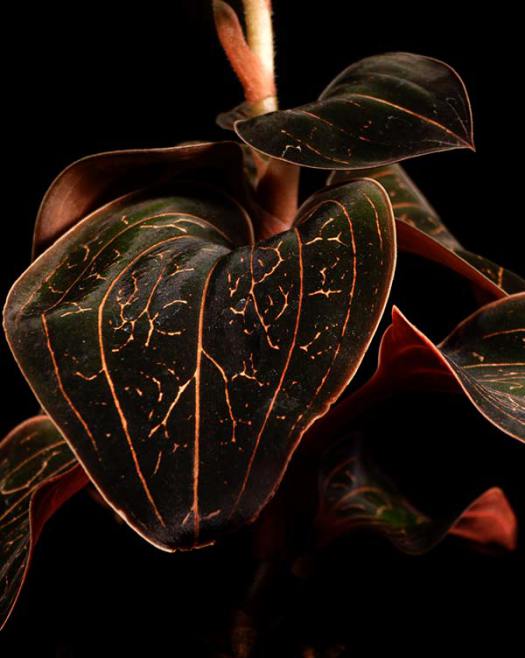 |
Anoectochilus chapaensisOne of the "jewel orchids". This species has more colorful flowers than most of this group. However, these are grown mostly for their beautiful leaves. The leaves on this species are velvety dark green (almost black in some iight) with red veins. I have found that these jewel orchids grow better as house plants than in the greenhouse. They want very low light, and the even temperature of the house seems to also work well for them. |
|
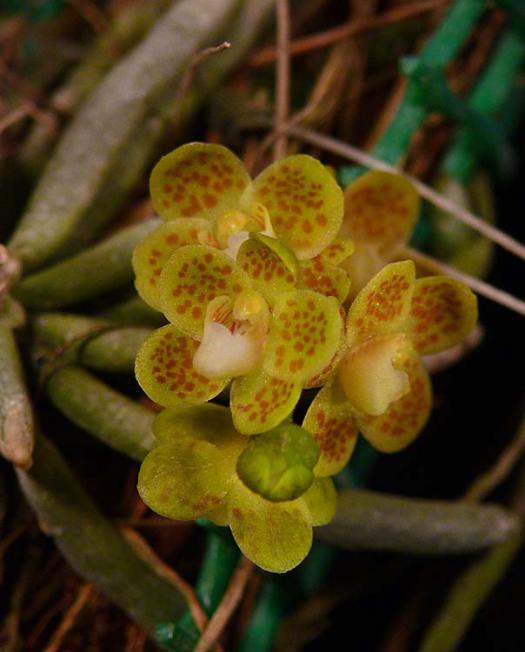 |
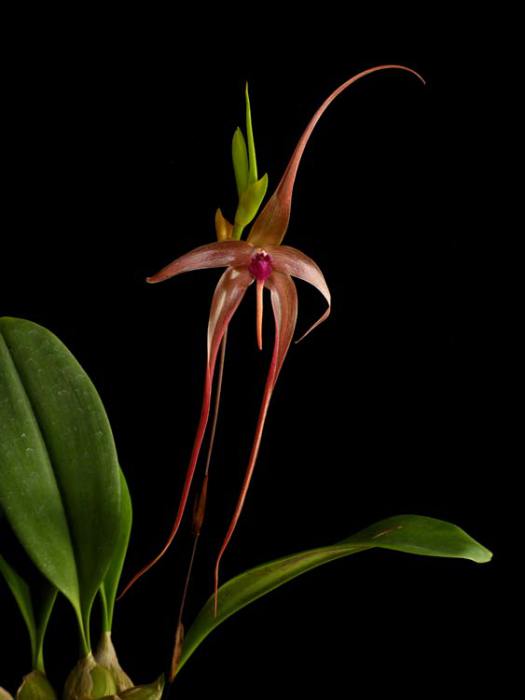 |
Chiloschista sweelimiiA leafless orchid - it photosynthesizes in its green roots. |
Bulbophyllum echinolabiumThe flower is so spectacular that it can be forgiven for being somewhat stinky. It blooms sequentially on an inflorescence. Flowers last only a few days, but then in a few weeks there's another for several months. |
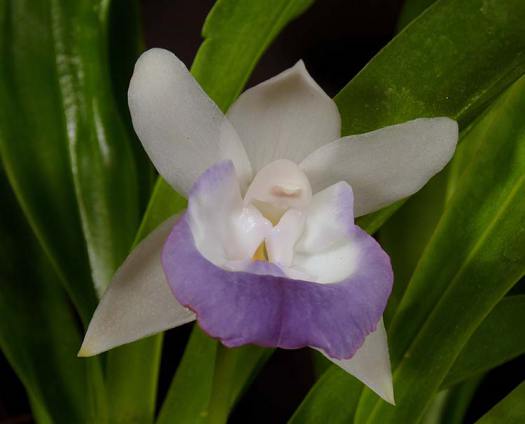
Warczewiczella (Cochleanthes) wailesianaA growth can produce several flowers, with heavy substance and dark coerulea lip. |
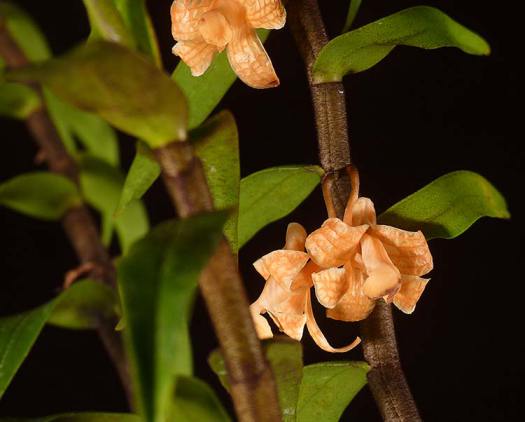
Dendrobium nemorale
|
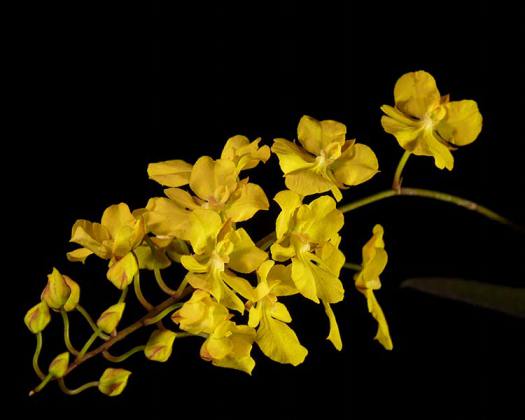
Zelenkoa (Oncidium) onustumIn nature, these grow in a seasonally-dry area (even on cactus). In the greenhouse it gets watered with everything else, but being mounted with no moss, it dries out very quickly and seems to grow well, even if it gets more water than it needs. |
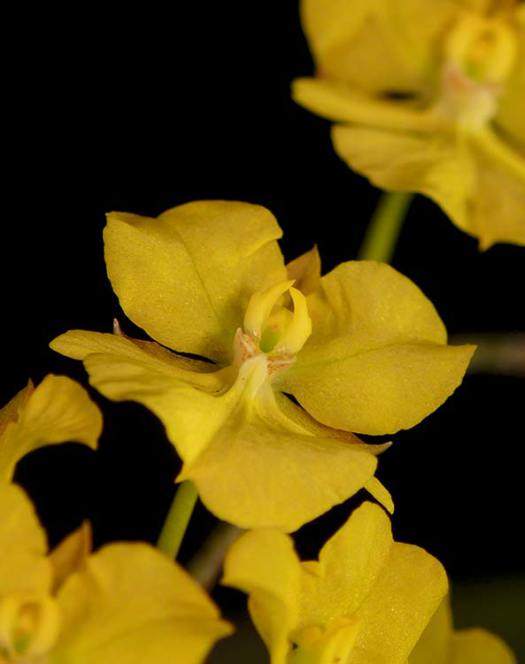 |
